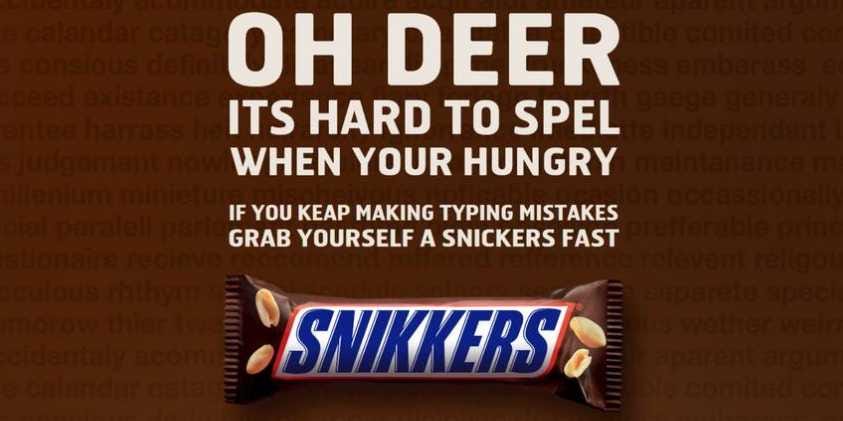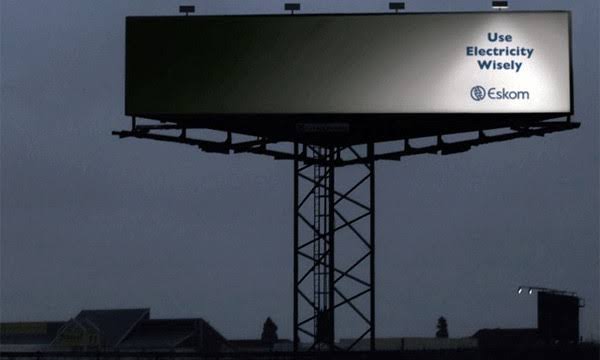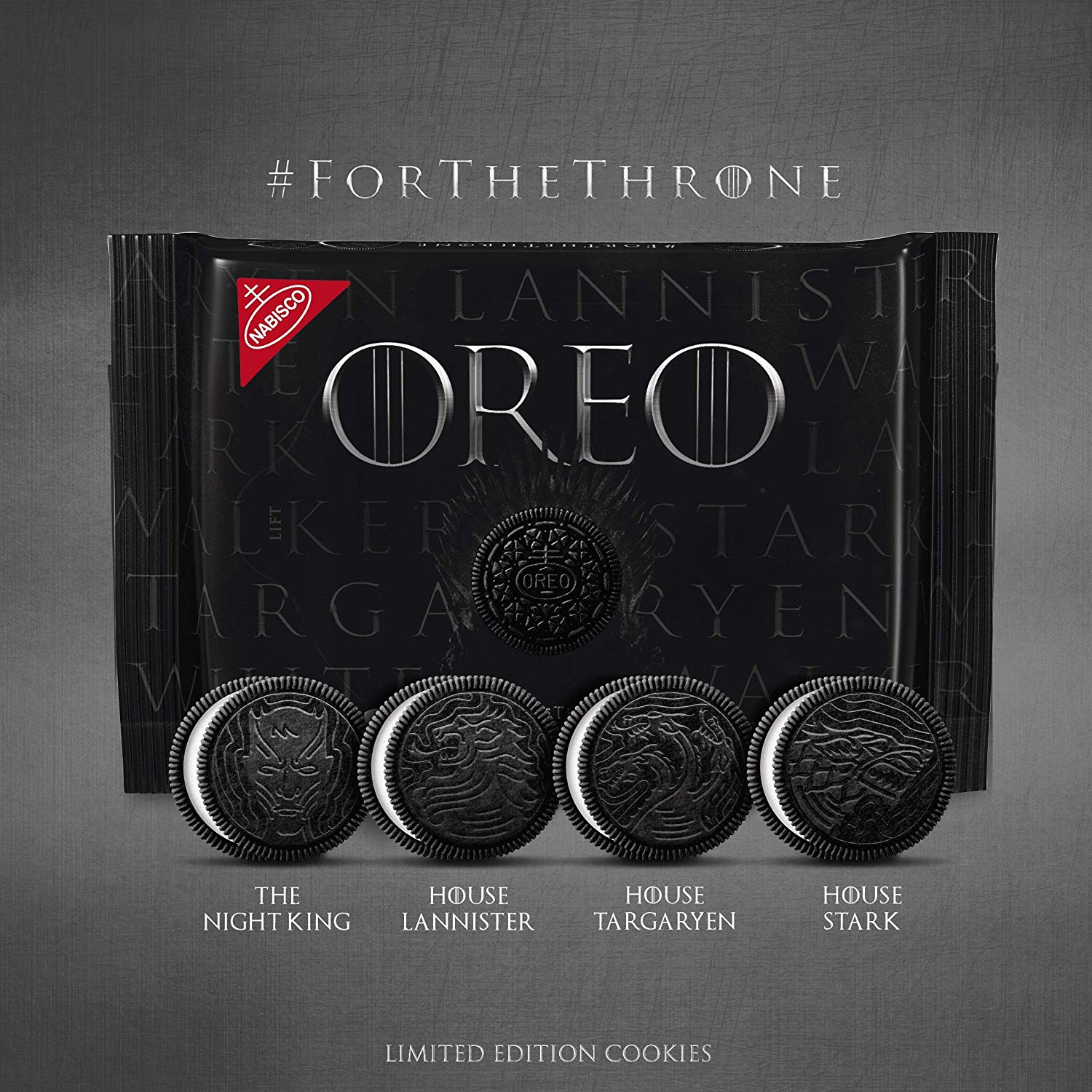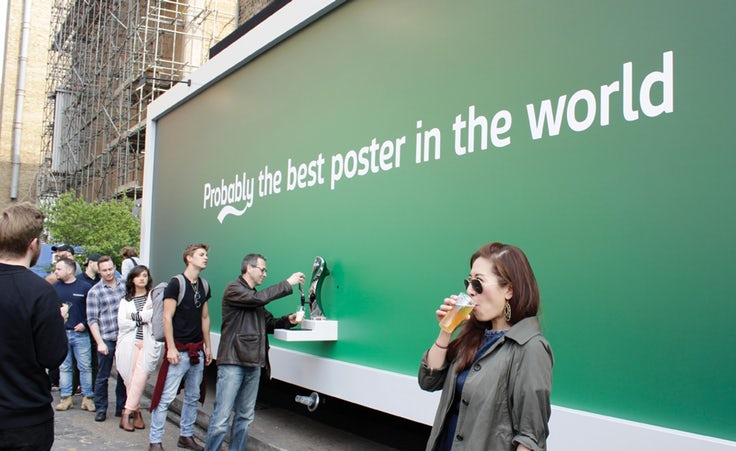media update’s Talisa Jansen van Rensburg reveals how to break free from traditional marketing and how to nail unconventional marketing.
Here’s how to become a pro at unconventional marketing:
1. Have a strong online presence
Having a strong online presence means that, when you post something, people will just know it is from your brand. There is nothing that annoys people more than spelling errors online, which is why brands need to ensure that their grammar and spelling is 100% correct. One brand actually saw an opportunity to grab the attention of everyone with its advertisement, where it spelt the word ‘Dear’ as its homophone companion, ‘Deer’.
We are all well aware of the golden rule online: never make spelling errors. But Snickers turned this rule on its head by purposefully making a ton of errors to catch readers’ eyes. (
Can you spot the other five spelling errors?)

Doing this allowed Snickers to send out a clear message: seeing these misspelt words means you probably need to grab a Snickers, because you are
starving!
Brands can also learn that an ad like this will allow for conversation to follow in the comment section meaning more traffic to your online ad. This will then allow your online presence to be strong and visible.
2. Don’t be forgotten offline
Consumers are bombarded with everyday adverts both online and offline, which seems to be generic. This means that there are opportunities to get the attention of your consumers, but only if you can cut through the noise.
For example, if your out-of-home campaign involves a billboard, consumers are unlikely to notice ‘just another billboard’. However, they
will remember it if you can do something unique with it — like Eskom did.

This billboard is different and conveys the message Eksom wants to get across to consumers very strongly. Brands need to think outside the box and ensure that they are not forgotten as soon as a customer puts their phone down.
Whether you’re using traditional or digital advertising — you don’t
always have to follow the rules. Doing something different (
and in this case, non-traditional traditional media) can ensure people
actually remember your adverts.
3. Don’t fear being different
Being different in a sea of similar fish might be a scary thought. In fact, brands often wonder where to draw the line with being different. But that is the thing with the wave of new generations; they want different, unique and strange — they
want unconventional marketing!
Jeep nailed being different with its ‘Jeep only’ parking spots.
 The Jeep Outdoor Parking Campaign painted parking spots over different objects
The Jeep Outdoor Parking Campaign painted parking spots over different objects that a ‘normal’ care will not be able to park in. It is obvious that these are not real parking spots, but it shows that a person driving a Jeep could basically park anywhere they want.
Just like Jeep, your brand needs to step out of its comfort zone and try new and strange things. That way, you’ll grab the attention of your consumers and
future consumers.
4. Incorporate trending topics in your marketing
Using a trending topic in your marketing will ensure that people find your campaign as soon as they Google the topic. Take Oreo for instance: The brand decided to jump on
The Game of Thrones wagon and brought out a limited edition of cookies that depicted the different house crests in the series.

The point of this strategy was to encourage consumers to buy the themed cookies and snack on them while watching
Game of Thrones. This is a great way to make use of a trending topic!
So how can your brand make this method its own? You need to look at various ways in which to incorporate trending topics into your marketing. Also, keep your location in mind. For example, if you are in South Africa, you need to keep the trending topics local and cultural; i.e. relevant to South Africans.
Nando’s did this well when it put out an advertisement targeting Eksom, since South Africans were sitting without electricity due to the coal being wet.

Just remember that trending topics are only ‘cool’ for a certain amount of time. Jumping onto a trend that is already over will just make your brand look out of touch. For example, if your advertising included doing the Harlem Shake or the Mannequin Challenge, you’d be
way behind the times.
5. Make use of interactive marketing
When consumers see an advertisement in a shopping centre they might acknowledge it, but they also
might just keep on walking. That’s why it’s important to create an advertisement that encourages interaction from your audience.
With interactive marketing, there is a bigger chance of people stopping, reading and then interacting with your ad. For example, Carlsberg created a billboard where people could get free beer.

So, instead of people just reading about Carlsberg in an ad, they were actually able to try it out for themselves — for free!
If you’re worried about the dent interactive content might make in your wallet, you could always try and co-brand with other companies. This means that you’ll both share the expenses of the campaign, and both brands will get exposure. A win-win!
Want to know more about co-branding? Check out these
Three reasons why a co-branding partnership bears great results.
And if you need a bit of inspiration, SocialSwipe is an amazing campaign to take note of.
Here, Misereor worked with Stripe.com and financial institutions to create this amazing interactive billboard. This campaign allowed people to donate 2€ to Misereor. Check out the video to gain more insight:
What are some of your favourite unconventional marketing campaigns? Let us know in the comments section below.
That was exciting, wasn’t it? To get more insightful stories delivered straight to your inbox, sign up to our newsletter.